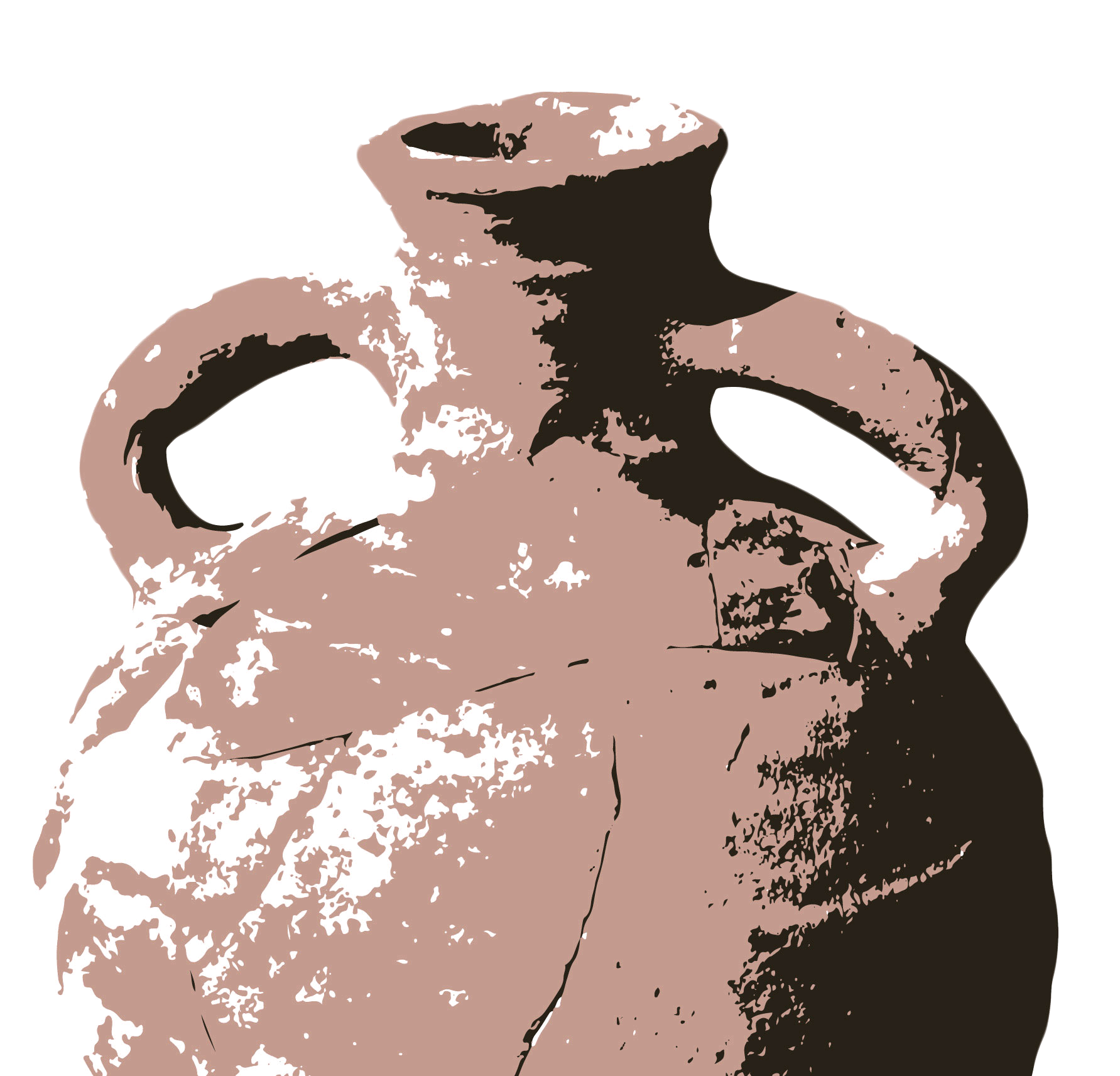
The overall methodology envisages three main steps that fit in with Work Packages 1-3:
Step 1 entails the analysis of pottery types, their classification and cataloguing according to shapes, functions, coatings, decorations, technologies, and origins (WP1). We assure full compliance with the Standard for Pottery Studies in Archaeology. During the fieldwork, we collected a vast amount of new data, including high-resolution photos and drawings. We used a Nikon 3500 camera with an AF-S NIKKOR 18-140mm (1:3.5-5.6) zoom along with the use of a lightbox to ensure the same lighting conditions. The pictures were saved in JPEG and RAW formats to ensure the ease of post-production manipulations on Photoshop or GIMP. The drawings follow the Standard of Montpellier Round Table. Original drawings were scanned in greyscale (300ppi) and vectorized on Illustrator or Inkskape. The huge amount of detail will enable the extrapolation of additional information, like the vase's capacities, or moving on to innovative approaches like 3D modeling or photogrammetry. Sampling is part of Step 1: it will guarantee a pilot microanalysis of ceramic fabrics and the choice of significant samples for more sophisticated investigations. Step 1 is essential to complete RO1 and move onto Step 2.
Read more about petrographic and chemical analysis
Step 2 entails creating a modern data model integrating newly generated records with legacy data (WP2). They primarily consist of old excavation reports, plans, sections, and photographs, essential to control the nature and quality of the information from Step 1, and to enhance the understanding of contexts. Their digitization will open them for reuse and will be consultable via European cultural heritage infrastructures. Other data are currently stored in obsolete formats needing manipulations to extrapolate the relevant information. For this reason, modeling an ontology is the crucial to complete RO2 and proceed to Step 3.
Step 3 entails exploring artifact distribution on the small, medium, and large scales using the Geographic information system (GIS) to investigate if the existing differences correspond to economic or ethnic diversities (WP3). In this regard, the choice of the sites above is meaningful, since literary sources (e.g., Procopius, Vand. I.13.22; 14.1-17; Goth. I.3.22) and epigraphy testify to the presence of Vandals, Goths, and Byzantines in southern and western Sicily, notably in Lilibeo and Palermo, and the existence of a frontier line within the island (CIL X, 2, 7232).
Environmental analysis. The environmental analysis is a crucial part of our project. Prof. Wilson found a significant quantity of charred seeds, including vine, lentils, and two species of grano (triticum monococcum and triticum durum), by sieving and floating soils from Campanaio and Castagna. We plan to conduct more sophisticated analysis on still preserved soil samples (about 30kg) from the Roman levels. Prof. Amy Bogaard will lead this analysis at Oxford University. This information will enrich our knowledge about the environment and local economy, to add to the results of the ongoing study of animal bones.
Looking for human parasites. The discovery of the chamber pots with preserved lime concentrations inside (c. 6 mm) and the potential to find human parasites within this material – similar to whipworm eggs identified in chamber pots discovered at another Sicilian site, Gerace - requires further specific analysis. Dr Marissa Ledger will conduct paleoparastiological analysis of the preserved concretions at the Ancient DNA Centre, McMaster University.
